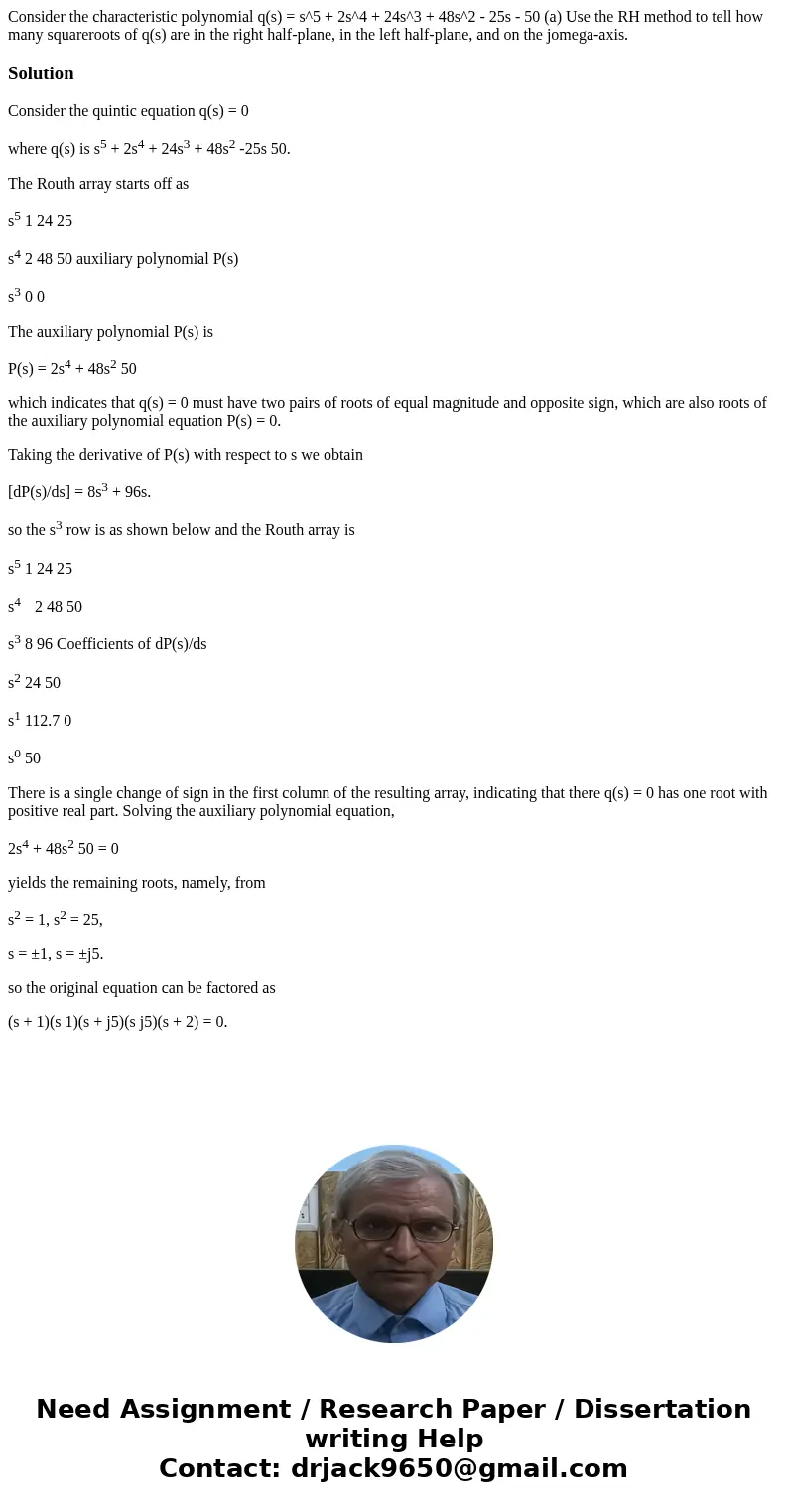Consider the characteristic polynomial qs s5 2s4 24s3 48
Solution
Consider the quintic equation q(s) = 0
where q(s) is s5 + 2s4 + 24s3 + 48s2 -25s 50.
The Routh array starts off as
s5 1 24 25
s4 2 48 50 auxiliary polynomial P(s)
s3 0 0
The auxiliary polynomial P(s) is
P(s) = 2s4 + 48s2 50
which indicates that q(s) = 0 must have two pairs of roots of equal magnitude and opposite sign, which are also roots of the auxiliary polynomial equation P(s) = 0.
Taking the derivative of P(s) with respect to s we obtain
[dP(s)/ds] = 8s3 + 96s.
so the s3 row is as shown below and the Routh array is
s5 1 24 25
s4 2 48 50
s3 8 96 Coefficients of dP(s)/ds
s2 24 50
s1 112.7 0
s0 50
There is a single change of sign in the first column of the resulting array, indicating that there q(s) = 0 has one root with positive real part. Solving the auxiliary polynomial equation,
2s4 + 48s2 50 = 0
yields the remaining roots, namely, from
s2 = 1, s2 = 25,
s = ±1, s = ±j5.
so the original equation can be factored as
(s + 1)(s 1)(s + j5)(s j5)(s + 2) = 0.

 Homework Sourse
Homework Sourse